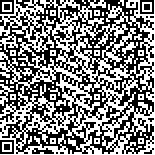缪晓影,郑碧娥,苏玲玲,等.低频磁疗对脱髓鞘模型小鼠髓鞘及炎性反应的影响[J].中华物理医学与康复杂志,2021,43(10):865-870
扫码阅读全文

|
| 低频磁疗对脱髓鞘模型小鼠髓鞘及炎性反应的影响 |
|
| |
| DOI:10.3760/cma.j.issn.0254-1424.2021.10.001 |
| 中文关键词: 低频磁疗 双环己酮草酰二腙 脱髓鞘 焦虑 炎性反应 |
| 英文关键词: Low frequency magnetic therapy Cuprizone Demyelination Anxiety Inflammatory response |
| 基金项目:广东省自然科学基金项目(2016A030313523);南方医科大学南方医院院长基金项目(2019B024) |
|
| 摘要点击次数: 5018 |
| 全文下载次数: 5584 |
| 中文摘要: |
| 目的 探讨低频磁疗对双环己酮草酰二腙(CPZ)诱导的脱髓鞘模型小鼠胼胝体区髓鞘及炎性反应的影响。 方法 将36只6~8周龄雄性C57BL/6J小鼠按随机数字表法分为对照组、CPZ组和磁疗组。对照组给予常规饲料饲养6周,CPZ组和磁疗组均用含0.3% CPZ混合饲料饲养6周,诱导脱髓鞘模型小鼠。磁疗组于开始喂食CPZ行磁疗干预6周,磁场强度为10 mT,频率为50 Hz。每隔7 d观察小鼠体质量。于第6周末行高架十字迷宫实验观察小鼠焦虑状态,采用卢卡斯快蓝(LFB)染色和髓鞘碱性蛋白(MBP)免疫组化技术观察胼胝体区髓鞘,采用酶联免疫吸附(ELISA)法检测胼胝体区肿瘤坏死因子-α(TNF-α)和白细胞介素-1β(IL-1β)含量。 结果 干预6周后,磁疗组的体质量较CPZ组明显改善(P<0.05)。CPZ组的进入开臂次数[(7.75±2.05)次]、开臂内滞留时间百分比[(8.13±2.34)%]和进入开臂次数百分比[(20.46±3.04)%]均较对照组[(12.50±3.70)次、(25.75±2.20)%和(43.49±2.98)%]显著减少(P<0.01);而与CPZ组比较,磁疗组的进入开臂次数[(10.00±2.05)次]和进入开臂次数百分比[(24.23±5.63)%]均明显增多(P<0.05),且开臂内滞留时间百分比[(15.81±6.07)%]显著升高(P<0.01)。LFB染色显示,CPZ组胼胝体区髓鞘脱失明显,与CPZ组相比,磁疗组胼胝体区髓鞘脱失明显改善,MBP免疫组化染色进一步证实了这一结果,CPZ组MBP表达量较对照组明显减少(P<0.01);而与CPZ组相比,磁疗组MBP表达量明显增多(P<0.01)。与对照组相比,CPZ组的TNF-α和IL-1β的蛋白水平明显升高(P<0.01);与CPZ组相比,磁疗组胼胝体区TNF-α和IL-1β的蛋白水平均显著降低(P<0.01)。 结论 低频磁疗可以改善小鼠体重和焦虑状态,其机制可能与改善胼胝体区髓鞘脱失及抑制炎性反应有关。 |
| 英文摘要: |
| Objective To explore the effect of low frequency magnetic stimulation on myelin and inflammation in the callosum of demyelinated mice. Methods Thirty-six 6 to 8-week-old male C57BL/6J mice were randomly divided into a control group, a cuprizone (CPZ) group and a magnetic therapy group. The CPZ group and the magnetic therapy group had demyelination induced by feeding a mixed diet containing 0.3% CPZ for 6 weeks, while the control group was given conventional food. The magnetic therapy group was given 50Hz 10mT magnetic stimulation during the 6 weeks for 20min daily, 5 days a week. The body mass of each mouse was observed every 7 days. At the end of the 6th week elevated cross maze experiments were conducted to observe any anxiety state. The myelin sheath in the corpus callosum was observed using Luxol fast blue staining and myelin basic protein (MBP) immunohistochemistry Tumor necrosis factor-α (TNF-α) and interleukin-1β (IL-1β) in the corpus callosum were detected using enzyme-linked immunosorbent assays. Results After the 6 weeks of treatment, the average body mass of the mice in the magnetic therapy group had improved significantly compared with the CPZ group. The CPZ group′s times in the elevated cross maze experiments were significantly shorter than those of the control group and also shorter than those of the magnetic therapy group. The Luxol staining showed significant myelin loss in the corpus callosum of the CPZ group, but compared with the CPZ group the average loss of myelin in the magnetic therapy group was significantly less. This was further confirmed by the MBP immunohistochemistry. Compared with the control group, the average expression of MBP in the CPZ group was significantly reduced, while in the magnetic therapy group it was significantly increased. Compared with the control group, the average TNF-α and IL-1β levels in the corpus callosum of the CPZ group increased significantly, but compared with the CPZ group the average levels in the magnetic therapy group had decreased significantly. Conclusions Low frequency magnetic stimulation improves the body weight and anxiety state of mice. That is probably related to less myelin loss and inhibited inflammatory response in the corpus callosum. |
|
查看全文
查看/发表评论 下载PDF阅读器 |
| 关闭 |